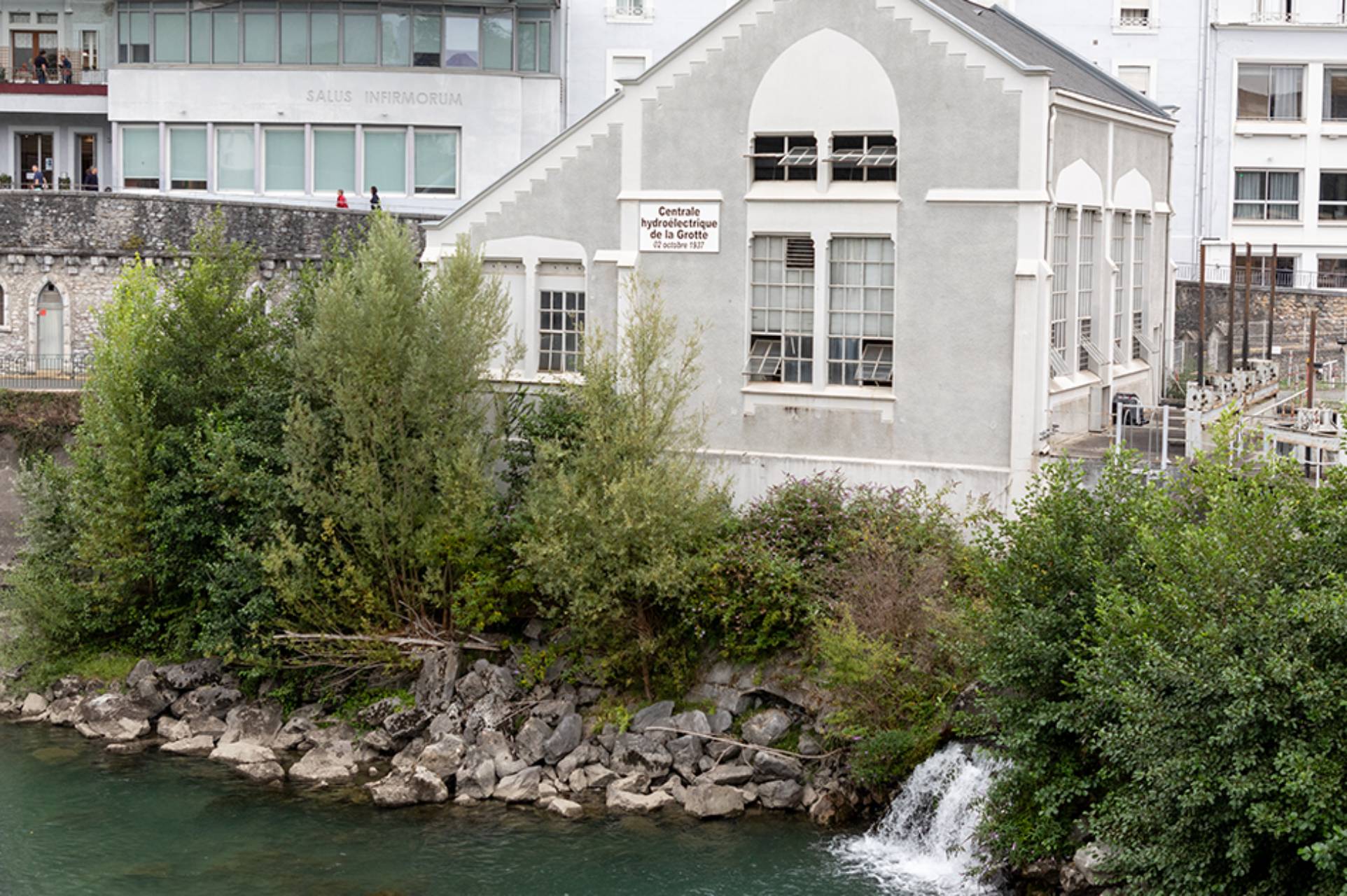
In recent years, the Sanctuary of Our Lady of Lourdes has diligently and enthusiastically undertaken several projects, reflecting a constant drive for adaptation and innovation. These projects demonstrate a commitment to addressing current challenges while anticipating future developments. This summary presents the most significant achievements, highlighting the scope, objectives, and results of each project.
In 1872, the Grotto project repaired the old dam on the Gave River to provide sufficient volume to power a first turbine in 1897 and then a second in 1899. These were the first steps towards the construction of the first power station, located in the printing works built at the same time (where the Centre for Spiritual Development (CAP) is located today). With two 90 kW dynamos, it provided lighting for the Sanctuary and powered the printing works for over 40 years.
In 1935, Bishop Gerlier decided to build a new power station (a bypass channel had already been constructed along the Quai Saint-Jean). It was completed in September 1937 and blessed and inaugurated on 2nd October by Bishop Gerlier, the day before he left for his new position as Archbishop of Lyon.
For the feast of Our Lady of Lourdes in 1938, the Sanctuary was fully illuminated for the first time thanks to the power generated by the new power station, which had been damaged by the floods of October 1937.
In 1949, the power station supplied 40 new streetlamps. The power of the light distributed throughout the area was increased fivefold compared to that of the old streetlamps, the number of which had doubled.
Other major works were carried out on the dam at the power plant in 1962. The works carried out in 2024 were essential to ensure continuity while respecting the environment and guaranteeing ecological sustainability.
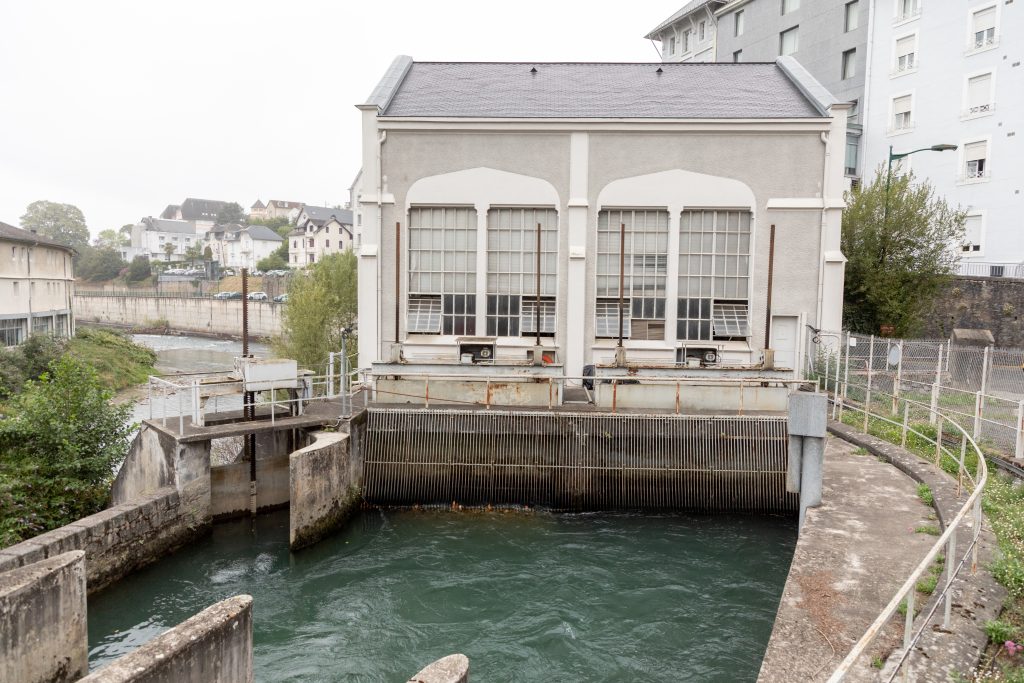
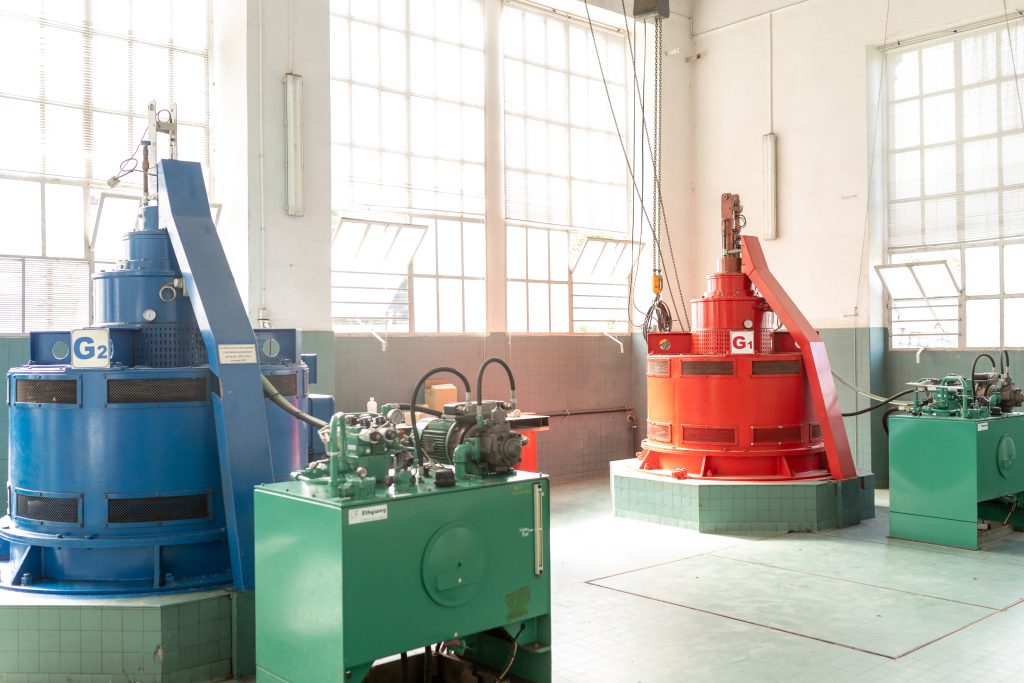
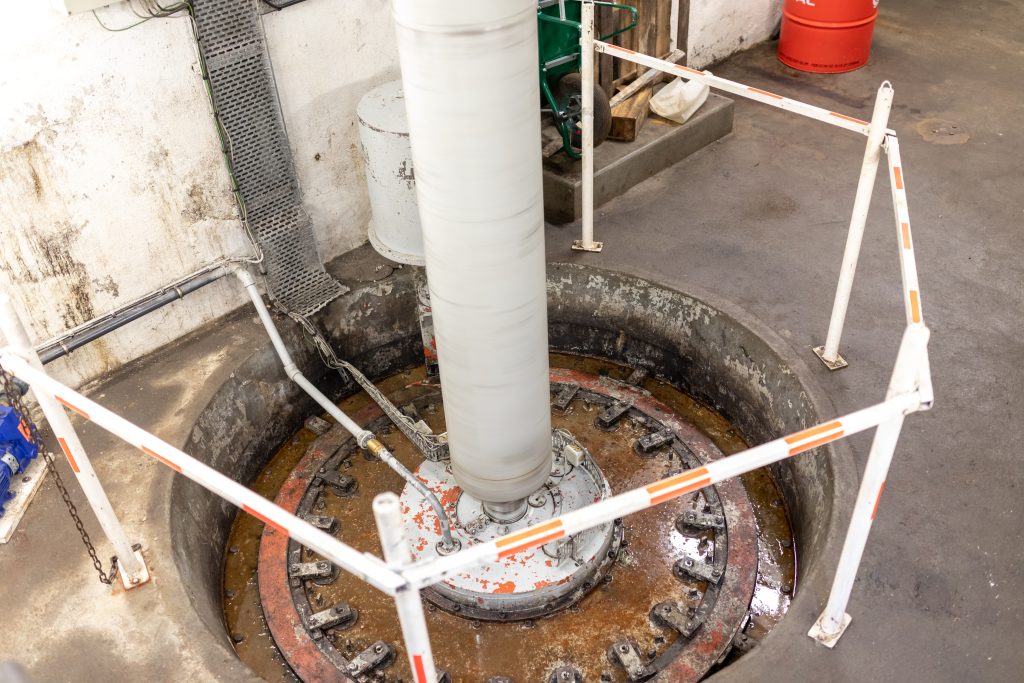
In 2024, the hydroelectric power plant, which generates a significant percentage of the electricity consumed in the Sanctuary, underwent compliance work to ensure ecological sustainability and preserve species migration in the Gave de Pau river. On the downstream bank (Quai Saint-Jean), the screen cleaner maintains a constant flow in the water intake channel by continuously cleaning the turbine protection screen and preserving fish species by facilitating their downstream migration at this water intake. On the other bank, a device known as a ‘fish pass’, consisting of stepped basins, allows fish to swim upstream at the dam.
These two components had to be adapted to changes in wildlife and conservation issues, and at the same time underwent technical improvements. This large-scale work was carried out during 2024. It required the two parts of the riverbed to be drained in turn by installing temporary dykes. The cost of the work amounted to over €2 million, subsidised in part by the Adour Garonne Water Agency.
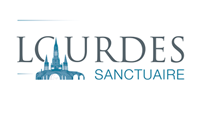
* Rehaussement de la réduction d’impôt pour les dons effectués au profit des associations cultuelles entre le 2 juin 2021 et le 31 décembre 2022 : vote définitif de la mesure dans la loi de finance rectificative n° 2021-953 du 19 juillet 2021. L’article 18 prévoit que le taux de la réduction d’impôt prévue au 1 de l’article 200 du code général des impôts est porté à 75 % pour les dons et versements, y compris l’abandon exprès de revenus ou produits, effectués entre le 2 juin 2021 et le 31 décembre 2022, au profit d’associations cultuelles ou d’établissements publics des cultes reconnus d’Alsace-Moselle. Les versements réalisés en 2021 sont retenus dans la limite de 554 euros. Pour les versements réalisés en 2022, cette limite est relevée dans la même proportion que la limite supérieure de la première tranche du barème de l’impôt sur le revenu de l’année 2021. Le montant obtenu est arrondi, s’il y a lieu, à l’euro supérieur. Il n’est pas tenu compte de ces versements pour l’application de la limite de 20 % du revenu imposable. Précision : ce plafond de 554€ est bien distinct de celui dit “amendement Coluche” qui permet de bénéficier d’une réduction à 75% pour certaines associations caritatives et humanitaires dites « organismes d’aide aux personnes en difficulté ». Il est bien possible de cumuler ces deux avantages.